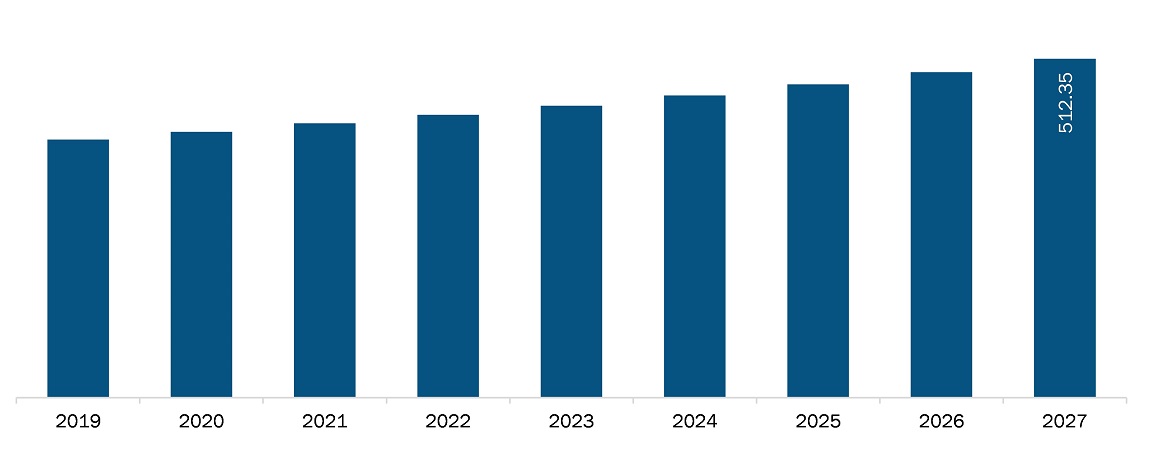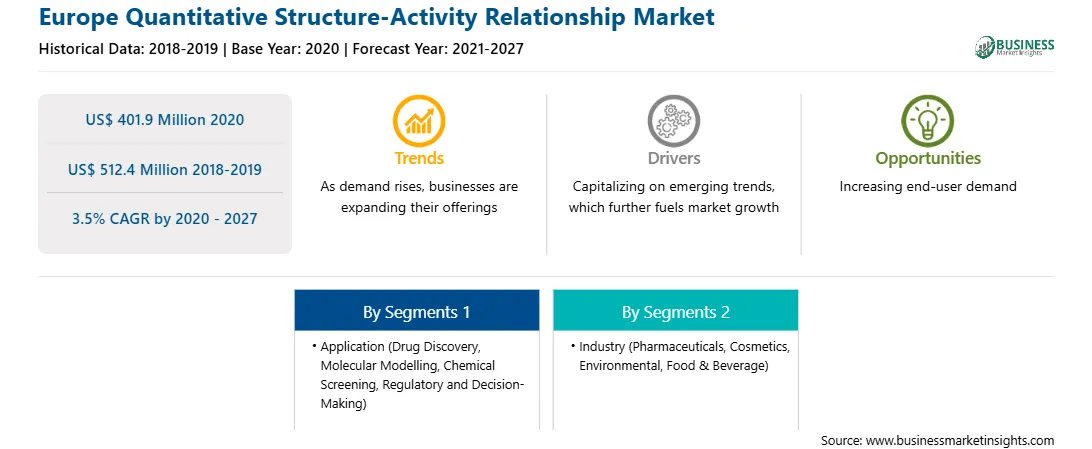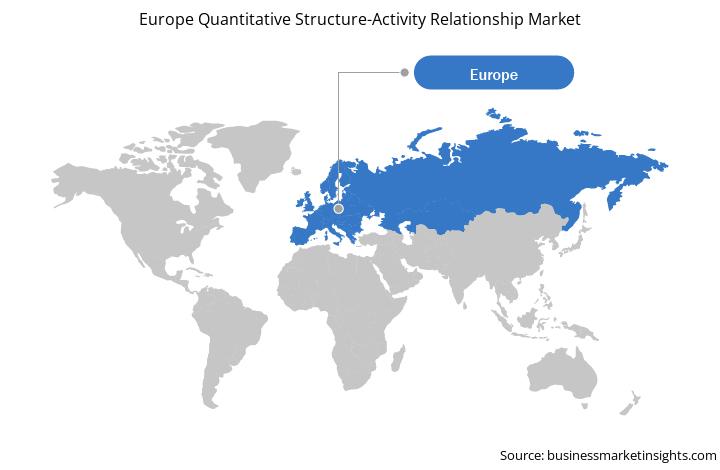A quantitative structure-activity relationship (QSAR) is a computational or mathematical modeling approach to reveal connections between biological activities and chemical compounds' structural properties. It attempts to correlate chemical structure with an activity using statistical approaches. The QSAR models are beneficial for various purposes, including the prediction of actions of untested chemicals. Also, it helps to prioritize desired biological activities as an in-silico methodology and thus decreases the number of candidate chemicals to be tested with in vivo experiments.
Thus, the increasing adoption of modeling tools in drug discovery is expected to create a significant demand for quantitative structure-activity relationships in the coming years, which is further anticipated to drive the quantitative structure-activity relationship market.
Computational Modeling has uses in the battle against Covid-19 beyond analyzing the structure of the virus itself. French artificial intelligence start-up Exact Cure is seeking to model and predict the efficacy and pharmacokinetics of already approved drugs being studied for Covid-19. Exact Cure has started to simulate two drugs being repurposed for Covid-19 to date: anti-malarial hydroxychloroquine and lopinavir/ritonavir, a protease inhibitor combination indicated for HIV. However, the start-up is building on this work through a recent partnership with analytics company Elsevier to leverage its PharmaPendium database of US Food and Drug Administration (FDA) and European Medicines Agency (EMA) approval documents to allow state-of-the-art models for 20 drugs and the integration of more personal parameters. The initiatives of governments in the region open a window of opportunities for the firms involved in the quantitative structure-activity relationship market.

Strategic insights for the Europe Quantitative Structure-Activity Relationship provides data-driven analysis of the industry landscape, including current trends, key players, and regional nuances. These insights offer actionable recommendations, enabling readers to differentiate themselves from competitors by identifying untapped segments or developing unique value propositions. Leveraging data analytics, these insights help industry players anticipate the market shifts, whether investors, manufacturers, or other stakeholders. A future-oriented perspective is essential, helping stakeholders anticipate market shifts and position themselves for long-term success in this dynamic region. Ultimately, effective strategic insights empower readers to make informed decisions that drive profitability and achieve their business objectives within the market.

| Report Attribute | Details |
|---|---|
| Market size in 2020 | US$ 401.9 Million |
| Market Size by 2027 | US$ 512.4 Million |
| CAGR (2020 - 2027) | 3.5% |
| Historical Data | 2018-2019 |
| Forecast period | 2021-2027 |
| Segments Covered |
By Application
|
| Regions and Countries Covered | Europe
|
| Market leaders and key company profiles |
|
The geographic scope of the Europe Quantitative Structure-Activity Relationship refers to the specific areas in which a business operates and competes. Understanding local distinctions, such as diverse consumer preferences (e.g., demand for specific plug types or battery backup durations), varying economic conditions, and regulatory environments, is crucial for tailoring strategies to specific markets. Businesses can expand their reach by identifying underserved areas or adapting their offerings to meet local demands. A clear market focus allows for more effective resource allocation, targeted marketing campaigns, and better positioning against local competitors, ultimately driving growth in those targeted areas.

The quantitative structure-activity relationship market in Europe is expected to grow from US$ 401.9 million in 2020 to US$ 512.4 million by 2027; it is estimated to grow at a CAGR of 3.5% from 2020 to 2027. The companies engaged in drug discovery and development are adopting various business strategies to expedite discovery timelines and improve product quality. Several players in this market are focusing on collaboration with innovative biotech companies, academics, and pharmaceutical companies to enhance their respective in silico-based service portfolio and maintain a competitive edge in the industry. Majority of the pharmaceutical companies have been benefited by adopting modelling software, which, in turn is expected to propel the growth of the quantitative structure-activity relationship (QSAR) market during the forecast period. For instance, Schrodinger’s collaboration with Agios Pharmaceuticals, Inc. resulted in two FDA approved therapies with the help of computational platform.
In terms of application, the drug discovery segment accounted for the largest share of the Europe quantitative structure-activity relationship market in 2019. In terms of end user, the pharmaceuticals segment held a larger market share of the quantitative structure-activity relationship market in 2019.
A few major primary and secondary sources referred to for preparing this report on the quantitative structure-activity relationship market in Europe are company websites, annual reports, financial reports, national government documents, and statistical database, among others. Major companies listed in the report are ProtoQSAR SL, Intertek Group Plc, Laboratory Corporation of America Holdings, Dassault Systems SE, Bibra Toxicology Advice & Consulting Ltd, and QSAR LAB SP. Z O.
By Application
By End User
By Country
The Europe Quantitative Structure-Activity Relationship Market is valued at US$ 401.9 Million in 2020, it is projected to reach US$ 512.4 Million by 2027.
As per our report Europe Quantitative Structure-Activity Relationship Market, the market size is valued at US$ 401.9 Million in 2020, projecting it to reach US$ 512.4 Million by 2027. This translates to a CAGR of approximately 3.5% during the forecast period.
The Europe Quantitative Structure-Activity Relationship Market report typically cover these key segments-
The historic period, base year, and forecast period can vary slightly depending on the specific market research report. However, for the Europe Quantitative Structure-Activity Relationship Market report:
The Europe Quantitative Structure-Activity Relationship Market is populated by several key players, each contributing to its growth and innovation. Some of the major players include:
The Europe Quantitative Structure-Activity Relationship Market report is valuable for diverse stakeholders, including:
Essentially, anyone involved in or considering involvement in the Europe Quantitative Structure-Activity Relationship Market value chain can benefit from the information contained in a comprehensive market report.